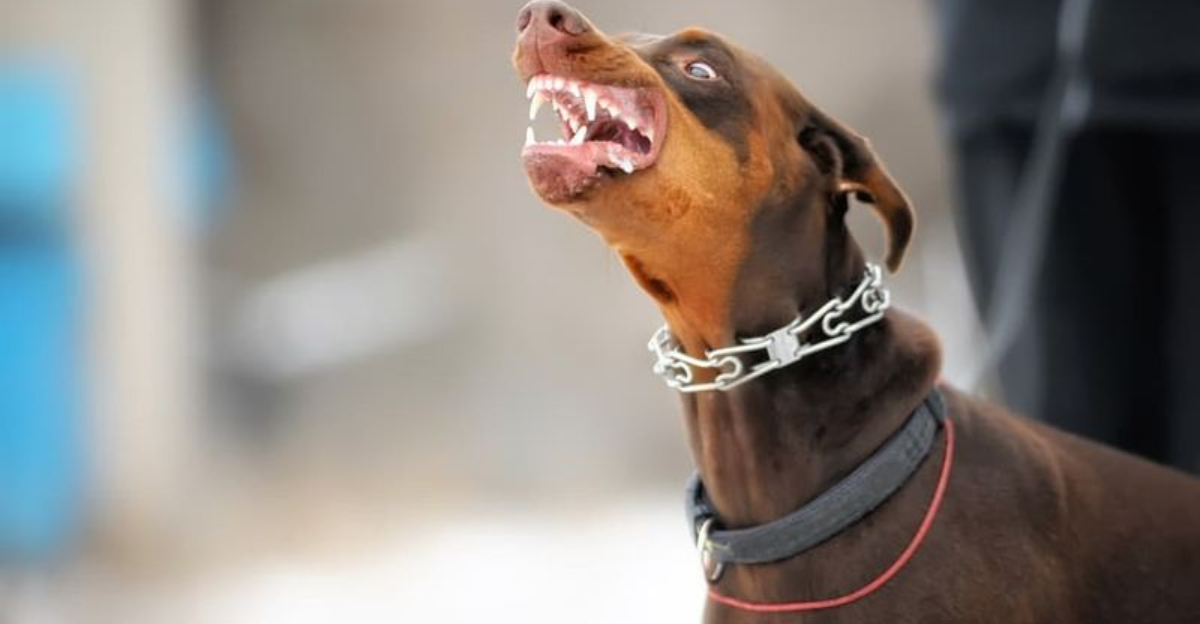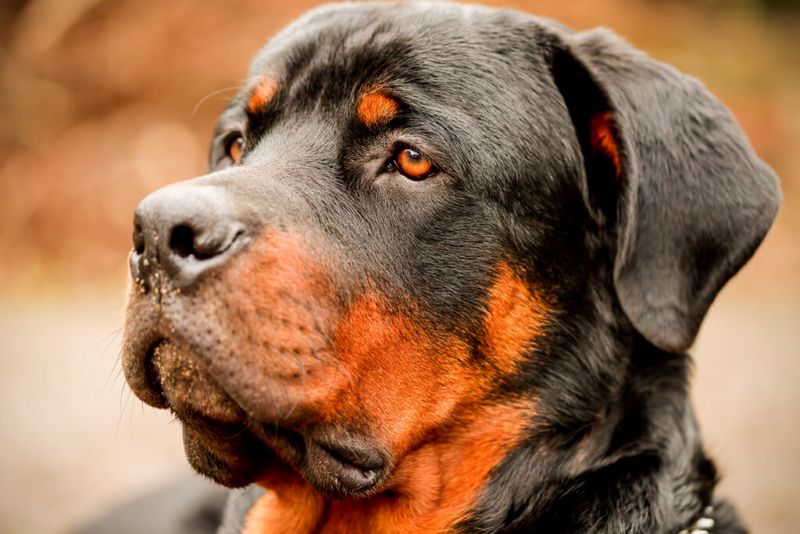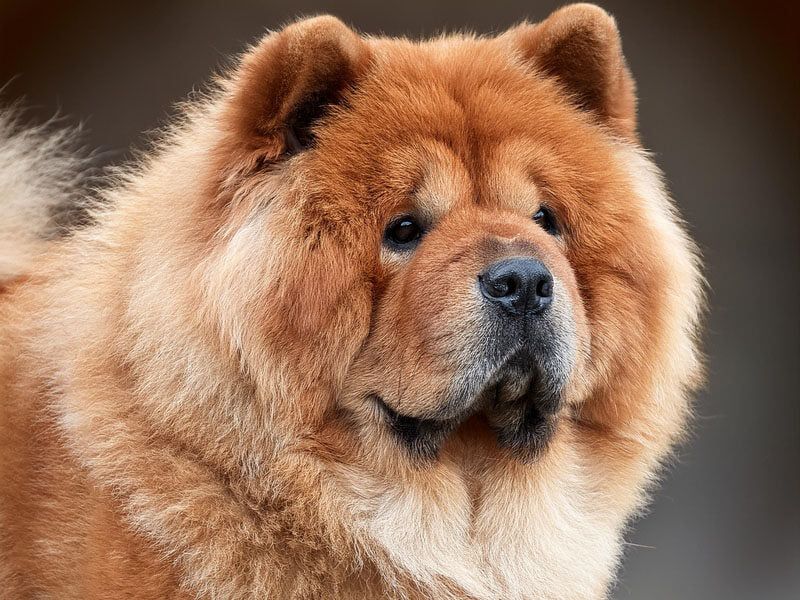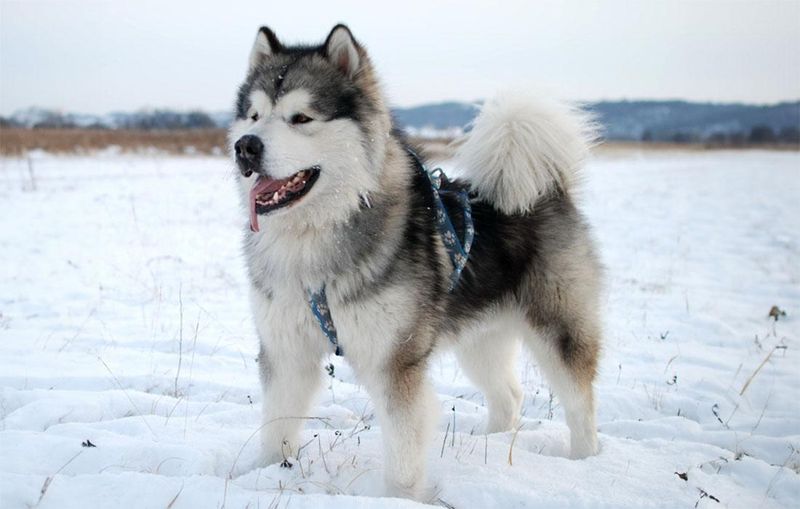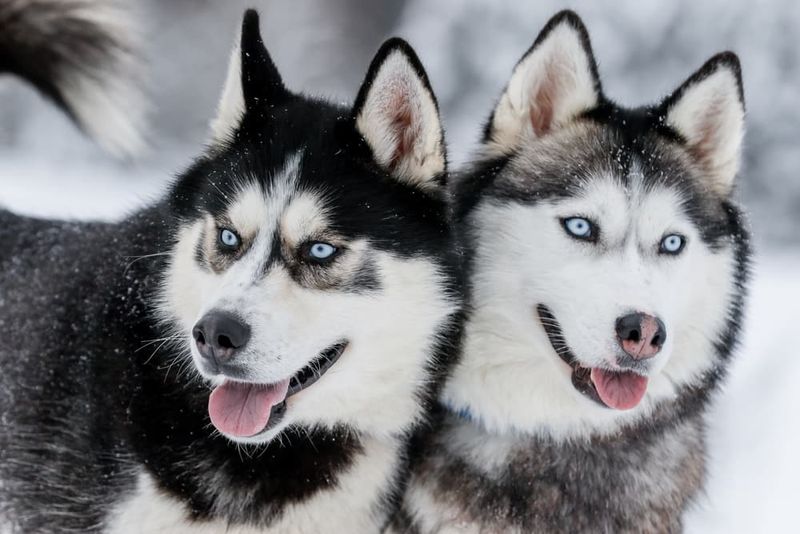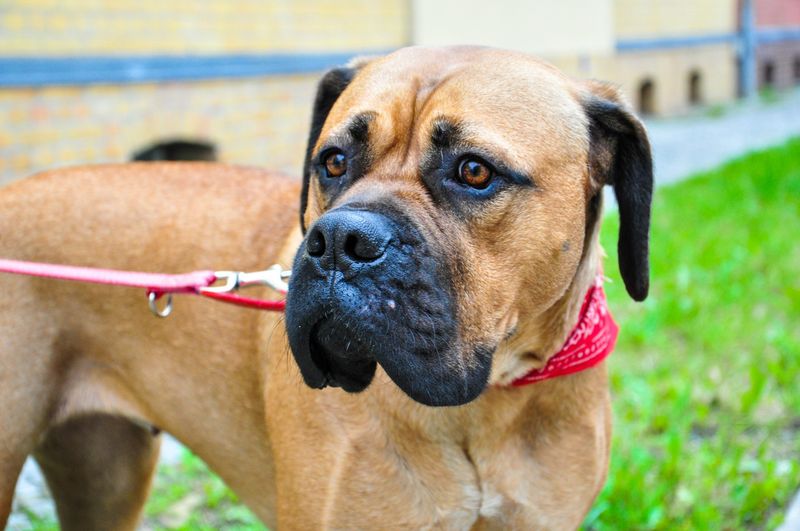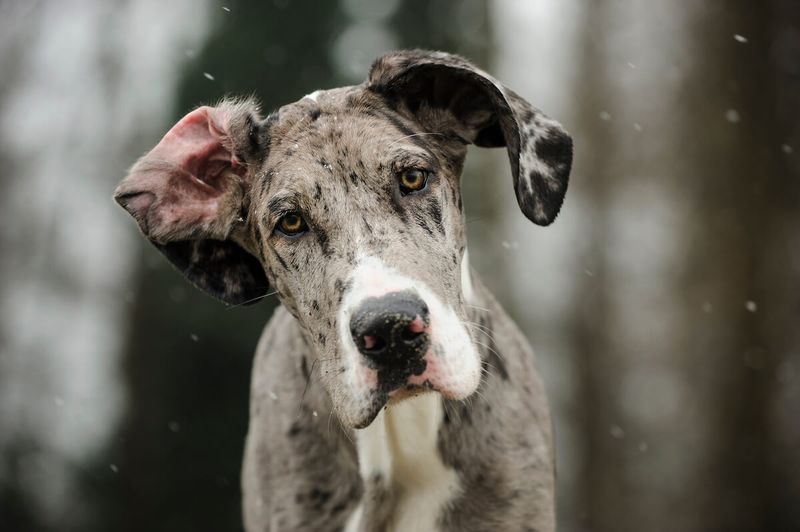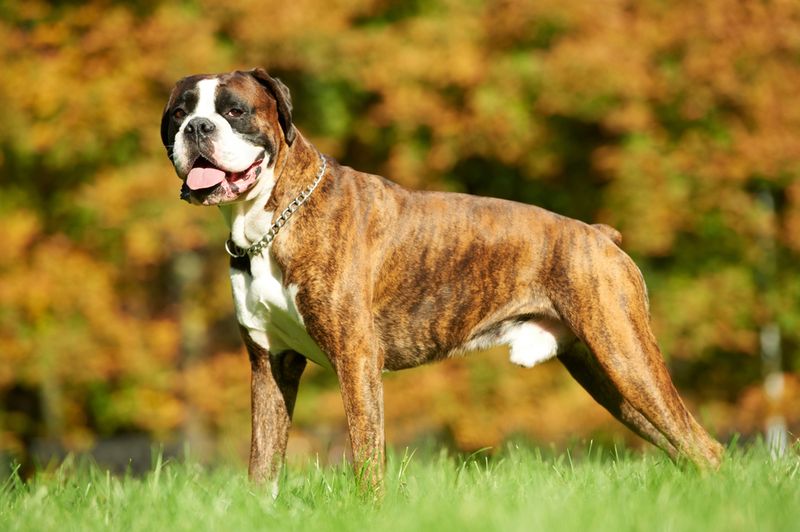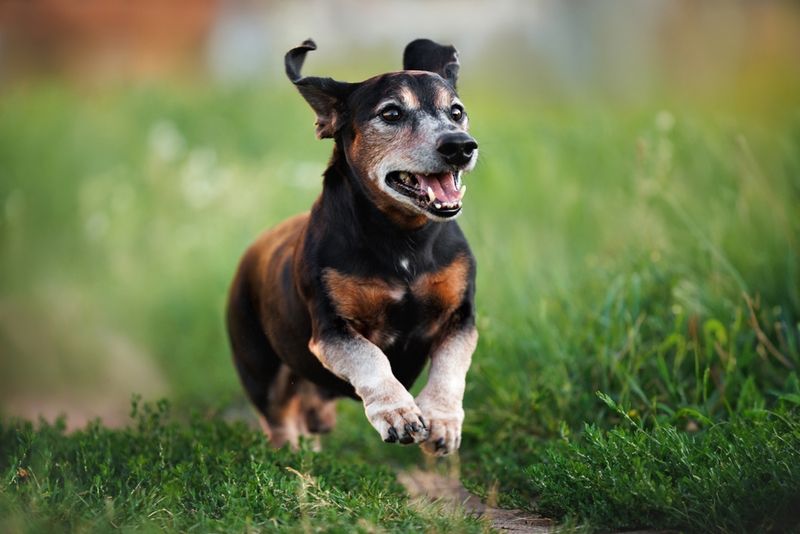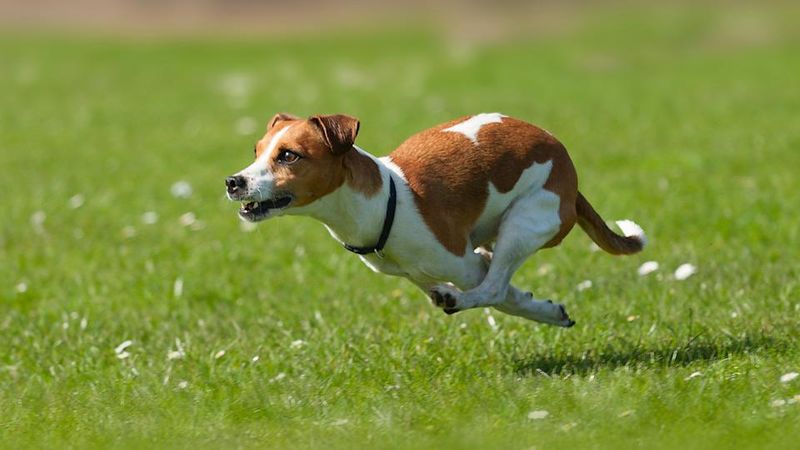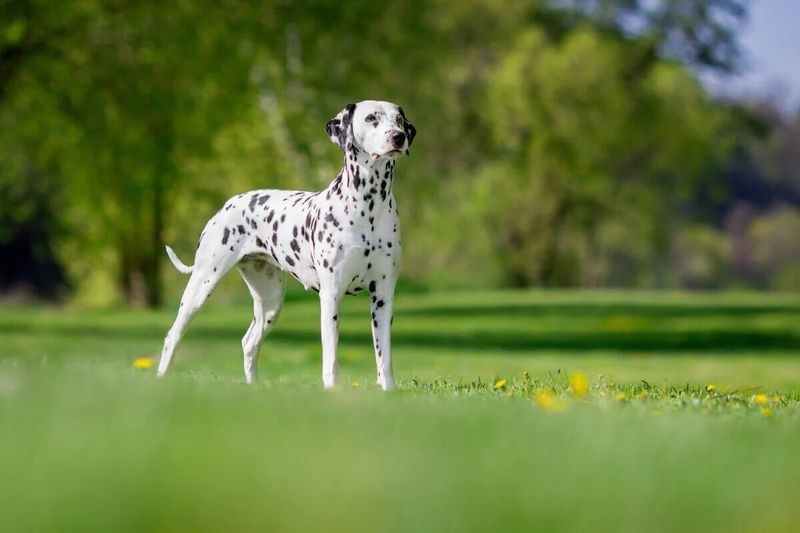When considering adopting a dog, it’s important to be aware of any potential bite history associated with particular breeds. While a dog’s behavior depends on various factors, including training and environment, knowing which breeds have been noted in bite incidents can guide informed decisions. This list highlights 15 dog breeds with notable bite histories that prospective owners should be aware of, ensuring the choice of a pet is both safe and rewarding.
Pit Bull Terrier
Known for its strength and loyalty, the Pit Bull Terrier often finds itself in controversial discussions about dog bites. Many owners praise their affectionate nature, yet their powerful build and tenacity have led to notable bite incidents. Proper training and socialization are key.
Despite their reputation, many Pit Bulls are loving family members. Their history as working dogs contributes to their sometimes misunderstood behavior.
Did you know? Pit Bulls were once known as “nanny dogs” for their gentle nature with children. Their image has shifted over time due to selective breeding and societal perceptions.
Rottweiler
With a history as a guard dog, the Rottweiler’s powerful presence commands respect. These dogs are fiercely loyal and protective, traits that can lead to biting if not managed properly. Socializing them early is crucial.
Rottweilers are known for their intelligence and strength. Their imposing stature can deter intruders, but without proper guidance, they may misinterpret situations.
Originally used to herd livestock, Rottweilers have a rich history in working roles. Understanding this background helps in comprehending their sometimes aggressive tendencies.
German Shepherd
Renowned for their intelligence and versatility, German Shepherds excel in various roles from police work to companionship. However, their protective instincts can result in bites if not properly directed.
These dogs are highly trainable, yet require an experienced handler to harness their potential. Early training can prevent unwanted behaviors like biting.
Did you know? German Shepherds were originally bred for herding sheep, showcasing their natural leadership abilities. This history influences their behavior, making proper training essential for a harmonious relationship.
Chow Chow
With a regal appearance, the Chow Chow often attracts admirers. However, their aloof nature and strong-willed personality can lead to territorial aggression, including biting.
Chow Chows require confident owners who can manage their independent streak. They are less likely to seek human attention, wanting space instead.
Despite their challenges, Chow Chows have a long history as companions to Chinese nobility. Understanding their lineage helps in appreciating their unique characteristics and addressing potential issues like biting.
Alaskan Malamute
The Alaskan Malamute is a powerhouse among breeds, known for its strength and endurance. While generally friendly, their size and energy pose challenges that can result in bites.
Malamutes need ample exercise and mental stimulation to prevent frustration. Their independence requires owners who can provide consistent training.
Originating as sled dogs, Malamutes have a strong work ethic. Understanding their background helps in managing their behavior and minimizing bite risks.
Siberian Husky
The Siberian Husky captivates with its striking looks and playful nature. However, their high energy levels and independent spirit can lead to behavioral issues, including biting.
Huskies thrive in active environments where they can channel their energy positively. Without proper outlets, they may resort to unwanted behaviors.
Did you know? Huskies were originally bred to pull sleds over long distances, showcasing their stamina and resilience. This history is crucial in understanding their needs in a domestic setting.
Bullmastiff
Bullmastiffs are gentle giants, known for their protective instincts. Despite their calm demeanor, they can react with aggression if they perceive a threat, leading to bites.
These dogs are devoted family members, yet require firm guidance to manage their guarding tendencies. Early socialization is essential.
Bullmastiffs were developed to guard estates from poachers. This background makes them naturally protective, emphasizing the need for proper training to ensure safety.
Doberman Pinscher
The Doberman Pinscher, with its sleek appearance and alert demeanor, is both elegant and formidable. Known for its intelligence and loyalty, it requires strong leadership to prevent unwanted behaviors such as biting.
Dobermans excel in protection roles, but without proper guidance, they may become overly aggressive. Socialization is key to managing their instincts.
Did you know? The breed was developed by a tax collector in Germany who wanted a loyal and protective companion. This origin story highlights their natural guarding instincts.
Belgian Malinois
Renowned for their agility and intelligence, the Belgian Malinois serves in various roles from police work to agility competitions. Their drive and intensity can lead to biting if mismanaged.
These dogs require active lifestyles and challenges to channel their energy positively. Experienced handlers are essential.
Did you know? Belgian Malinois excel in detection roles, using their keen sense of smell to assist in search and rescue missions. This trait highlights their need for mental stimulation.
Great Dane
The Great Dane, often dubbed the “gentle giant,” is known for its friendly demeanor. However, their size can intimidate, and improper handling may result in bites.
Great Danes need ample space and socialization to prevent anxiety. Their gentle nature shines when properly cared for.
Did you know? Despite their imposing size, Great Danes are often couch potatoes. Understanding their laid-back nature helps in managing their behavior and minimizing bite incidents.
Boxer
Boxers are known for their playful nature and boundless energy. However, their excitement can sometimes lead to aggressive behavior, including biting.
These dogs thrive in active households and need consistent training to curb their enthusiasm. Proper outlets for energy prevent unwanted incidents.
Did you know? Boxers were originally bred for hunting and guarding, which explains their protective instincts. Understanding this background aids in managing their behavior effectively.
Dachshund
With their elongated bodies and spirited personalities, Dachshunds are charming companions. However, their stubbornness can lead to biting if not properly trained.
Dachshunds need patience and consistent training to manage their independent streak. Their hunting background influences their behavior.
Did you know? Originally bred to hunt badgers, Dachshunds have a fearless nature that belies their small size. This history is key to understanding their bold personality and managing potential bite risks.
Jack Russell Terrier
Jack Russell Terriers, with their boundless energy, require active environments to thrive. This exuberance can lead to behavioral issues, including biting, if not properly managed.
These dogs are intelligent and thrive with mental challenges. Consistent training helps in curbing unwanted behaviors.
Did you know? Jack Russells were bred for hunting foxes, showcasing their tenacity and vigor. Understanding their origins aids in providing proper outlets for their energy.
Cocker Spaniel
Cocker Spaniels are known for their gentle looks and affectionate nature. However, their sensitivity can lead to defensive biting if they feel threatened.
These dogs thrive on companionship and require gentle handling. Building trust is key to preventing bite incidents.
Did you know? Cocker Spaniels were originally bred as hunting dogs, particularly for flushing birds. This background adds to their keen sense of smell and energetic disposition.
Dalmatian
Dalmatians, with their iconic spots, are known for their high energy and playful nature. However, without proper outlets, their excitement can turn to aggression, leading to bites.
These dogs need regular exercise and mental stimulation to stay balanced. Consistent training helps in managing their behavior effectively.
Did you know? Dalmatians have a history as carriage dogs, often running alongside horse-drawn carriages. This background highlights their need for activity and companionship.
